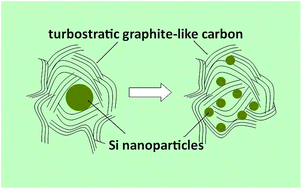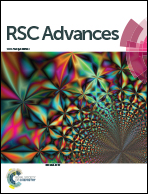Polyacrylonitrile-based turbostratic graphite-like carbon wrapped silicon nanoparticles: a new-type anode material for lithium ion battery†
Abstract
We investigated a new-type anode material for silicon (Si) nanoparticles wrapped in polyacrylonitrile (PAN)-based turbostratic graphite-like carbon, and discovered an interesting phenomenon that the battery capacity increased rather than decreased with the increase of cycling numbers. The carbonaceous matrix formed by PAN-based turbostratic graphite-like carbon could accommodate the volume change of Si nanoparticles and make the pulverized Si nanoparticles to keep good contact with the working electrode, thus to enable the full lithiation of Si and improve the battery capacity. As a result, the capacity of the anode material reached 680 mA h g−1, about twice as that of the commercial anode material, with only 9.8 w% silicon content. We also provided a new anode material preparation method that was easy to be industrialized, including using the PAN precursor and the preoxidation process to ensure the high carbon yield and the relatively high graphitization degree of the anode material. Some findings in this study are helpful to more clearly understand the lithiation–delithiation process of Si-based anode materials, as well as the basic strategy of increasing the Si-based anode material capacity.


 Please wait while we load your content...
Please wait while we load your content...